Just over six months after the Trianon Peace Treaty was signed, Hungary responded to its terms through the arts. Four of the greatest Hungarian sculptors of the age, Kisfaludi Strobl Zsigmond, István Szentgyörgyi, János Pásztor and Ferenc Sidló created the statues to depict what the lost territories had come to mean over the 1000 years of the country’s history. North, South, East, West: the extent of the treaty is symbolised in the totality of the four points of the compass.
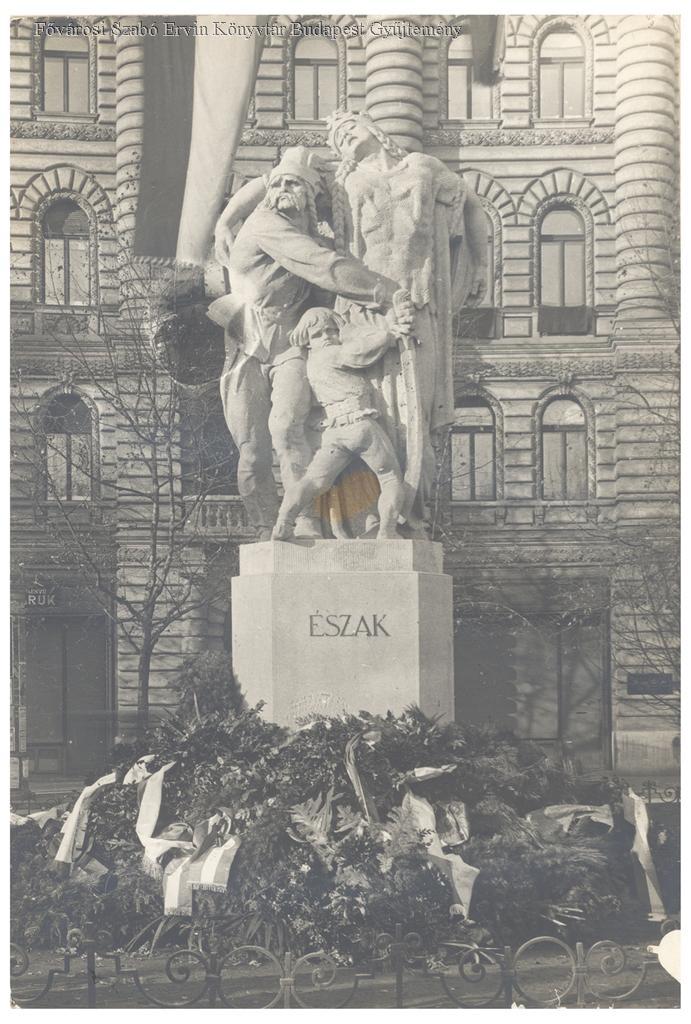
Észak ('north'), the statue by Zsigmond Kisfaludi Strobl in Szabadság Square (Source: FSZEK Budapest Image Archive)
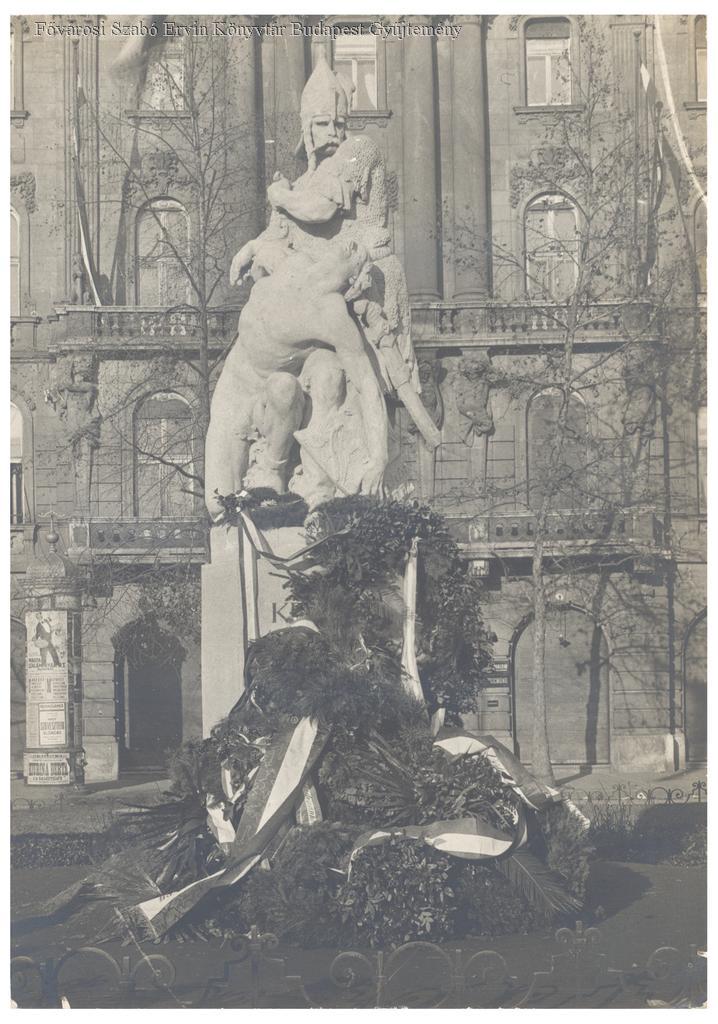
East. Sculpture by János Pásztor on Szabadság Square (Source: FSZEK Budapest Image Archive)
The Védőligák Szövetsége (‘Association of Defense Leagues’) commissioned the sculptors to bring the concept coined by Róbert Kertész, a respected architect and ministerial councillor, to life.
One of the largest squares of the city centre, Szabadság Square, was chosen for the group. The square had been created on the plot that once housed the building that embodied Habsburg retaliation after the 1848–49 War of Independence, where the first elected Hungarian Prime Minister, Lajos Batthyány, had been executed.
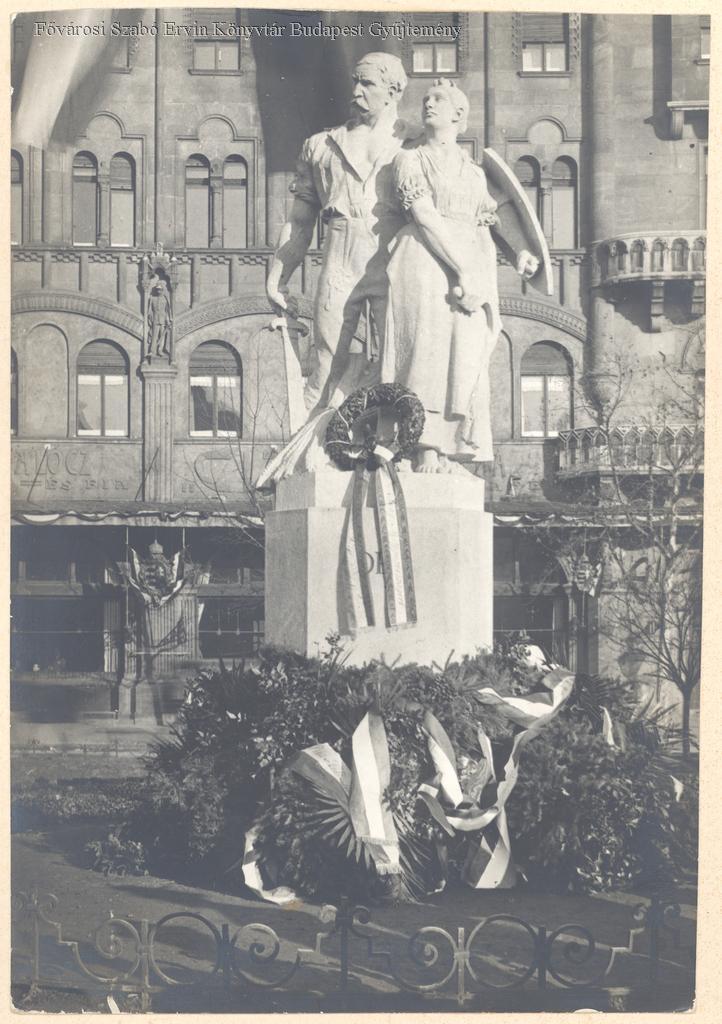
South by István Szentgyörgyi on Szabadság Square (Source: FSZEK Budapest Image Archive)
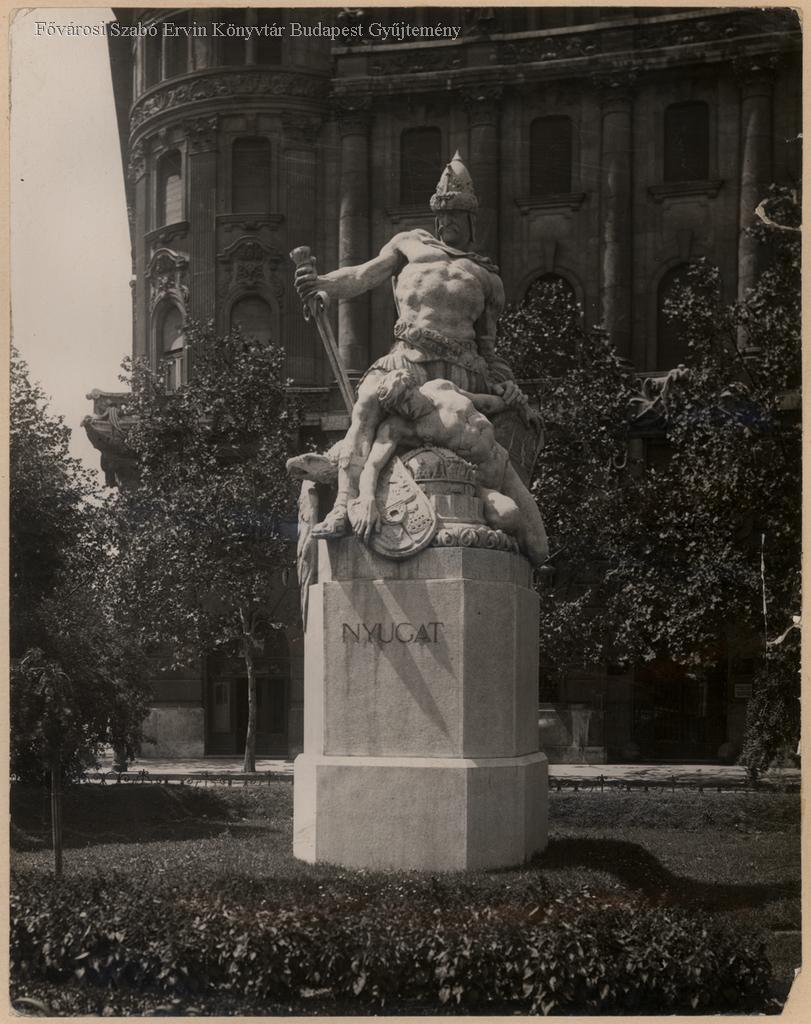
West by Sidló Ferenc on Szabadság Square (Source: FSZEK Budapest Céparchívum)
The statues, completed extremely quickly, were unveiled on 16 January 1921 on Szabadság Square. How did events unfold 100 years ago? The 23 January 23 issue of Ország-Vilűg reported:
“On Sunday, 16 January, at eleven o’clock in the morning, allegorical statues of the country’s lost territories were unveiled on Szabadság Square. About 50,000 people gathered for the event, Archduke Joseph and his family attended, representatives of all churches, universities, remaining representatives from the authorities of the lost regions stood around the tent of honour. A separate delegation represented the city of Pozsony.” (Bratislava, Slovakia)
The unveiling began with the national anthem, after which István Zadravecz, Roman Catholic Bishop of the Military Chaplaincy celebrated Mass. According to the report in Ország-Világ the bishop, and his entourage, “went to the steps of the tent, where the irredentist flag was blessed. László Sándor, former Budapest Police Chief, held the banner which depicted the Virgin Mary, with the coat of arms of 63 Hungarian counties. Woven into the fabric around the image of the Virgin stood the words: Our Mother, Blessed Virgin Mary, our great patron – Do not forget us poor Hungarians.”
Bishop Zadravecz blessed the flag, on behalf of the Roman Catholic Church, Deacon Emil Melles in the name of the Greek-Catholic Church, Pastor Géza Vankó blessed the banner on behalf of the Reformed, and János Koczián on behalf of the Lutheran denominations, unitarian deacon Miklós Józan represented the Unitarians. Dr Jenő Sipőcz, Mayor of Budapest then tied a ribbon for Budapest to the pole, followed by a representative from each lost settlement.
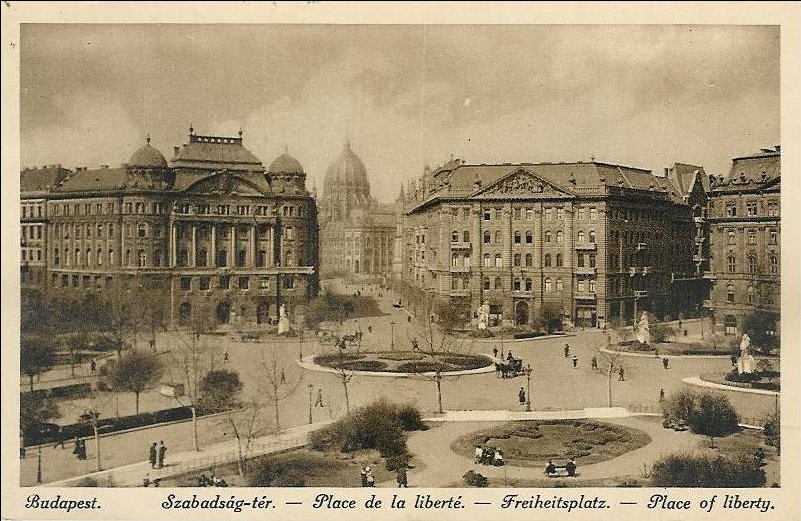
A postcard of Szabadság Square with the irredentist statues (Source: Szecessziós Magazin)
Nándor Urmánczy, an emblematic figure of the irredentist movement then gave a speech, in which he expressed the significance of the statues: “This place should be a site of national pilgrimages and a furnace of hate and vengeance. From today, this place has become a part of the bloody history of Europe.”
Ország-Világ quoted the following words from the speech: “They have stolen our forests, our mountains – even the boards of our coffins have been denied from us. They have stolen our treasures; everything needed for life has been taken from us. This can only lead to the complete loss of our nation if no strong hand comes soon that leads us to unite all our efforts in the great work needed to reunite our country.”
The report claims that the veil was pulled from the statues while Urmánczy spoke these words. Mayor Jenő Sipőcz accepted the statues in a short speech.
The ceremony ended at St. Stephen’s Basilica, to where the assembled marched with the irredentist flag, which was handed over to Abbot Kálmán Kovács, to be displayed in the Basilica.
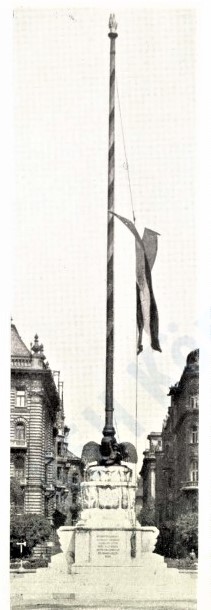
Photo of the national flag placed in Szabadság Square in 1928 from Endre Liber's book: Budapest szobrai és emléktáblái
The sculptures were later supplemented with a flowerbed surrounded by the statues that stood in a semicircle. The flowers drew a map of Historical Hungary, which was in turn ringed by the words of the Hungarian Creed. In 1928 a national flag, symbolically always flown at half-mast, was added to the composition.
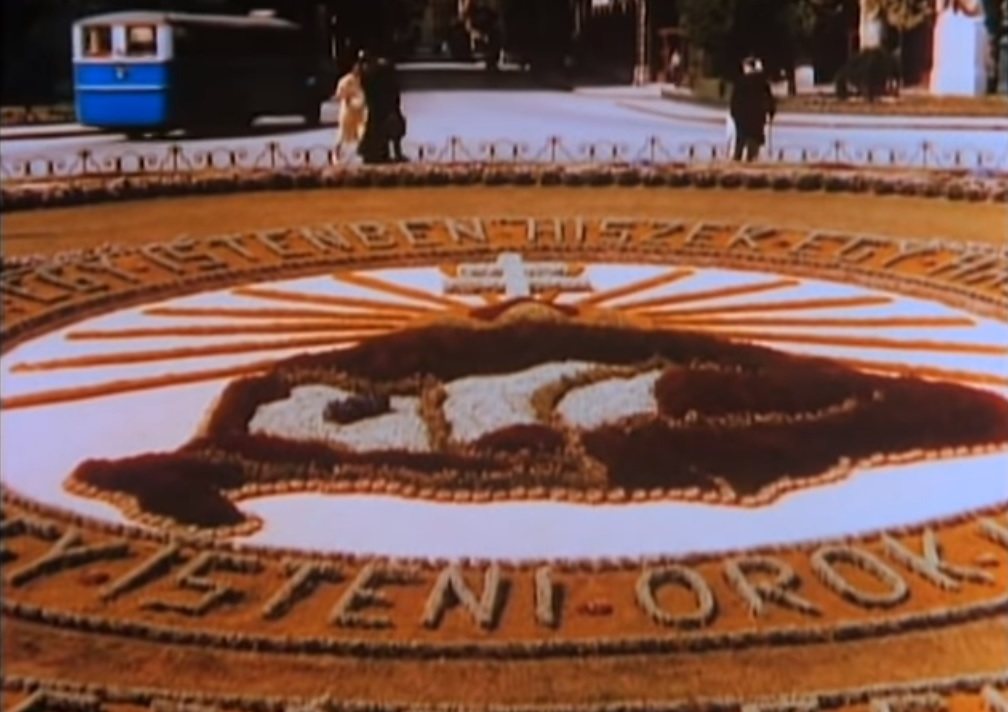
The flower bed on Szabadság Square as seen in the coloured frame of a 1938 American film
The sculptures survived the Second World War and stood in place until August 1945. Following the common playbook of the times, they were removed after attacks from the press fuelled by “spontaneous indignation”. Their fate remains unknown. The Soviet monument, erected on the square, emphasised the expropriation of the nation’s former pilgrimage site.
Read our previous article about the irredentist church on Szabadság Square.
Cover photo: Studio images of the four sculptures with the creators in the 23 January 1921 issue of Ország-Világ





































Hozzászólások
Log in or register to comment!
Login Registration